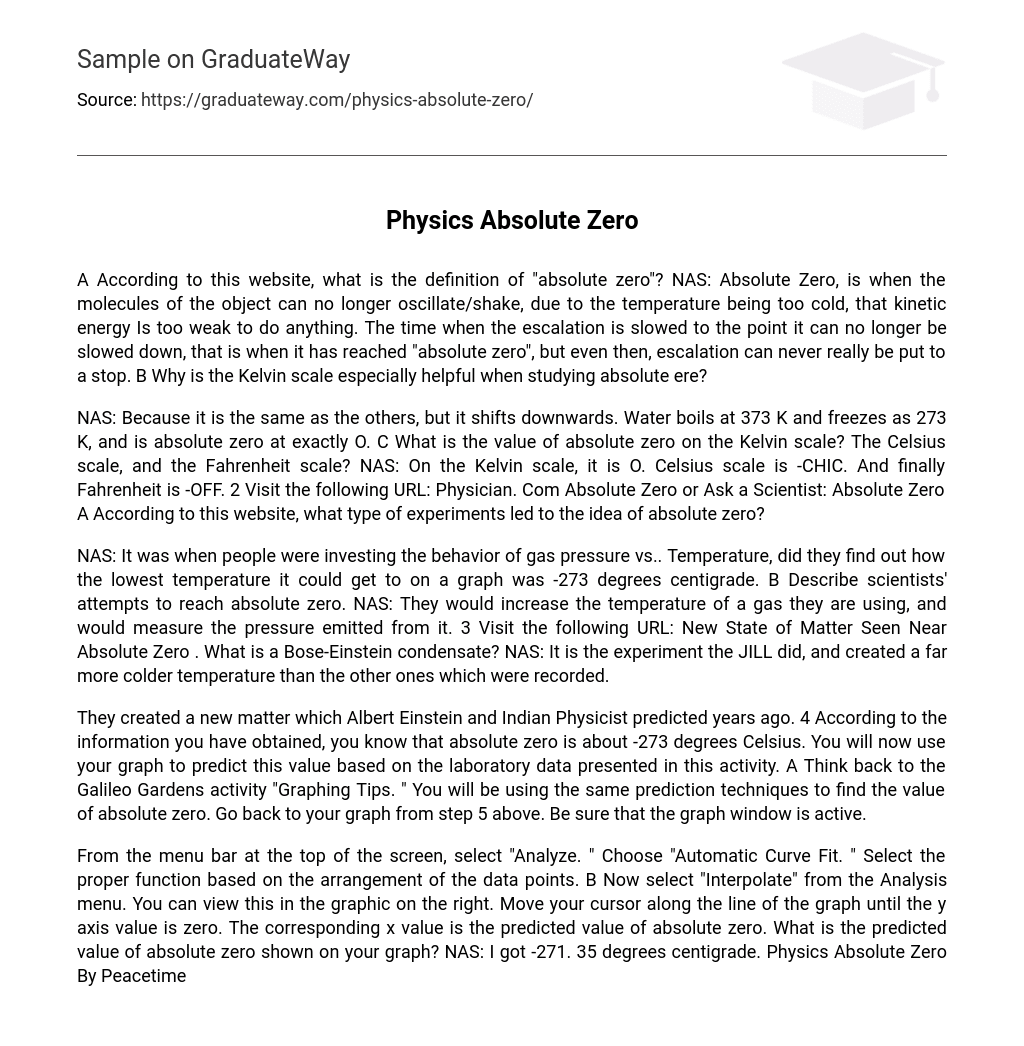A According to this website, what is the definition of “absolute zero”? NAS: Absolute Zero, is when the molecules of the object can no longer oscillate/shake, due to the temperature being too cold, that kinetic energy Is too weak to do anything. The time when the escalation is slowed to the point it can no longer be slowed down, that is when it has reached “absolute zero”, but even then, escalation can never really be put to a stop. B Why is the Kelvin scale especially helpful when studying absolute ere?
NAS: Because it is the same as the others, but it shifts downwards. Water boils at 373 K and freezes as 273 K, and is absolute zero at exactly O. C What is the value of absolute zero on the Kelvin scale? The Celsius scale, and the Fahrenheit scale? NAS: On the Kelvin scale, it is O. Celsius scale is -CHIC. And finally Fahrenheit is -OFF. 2 Visit the following URL: Physician. Com Absolute Zero or Ask a Scientist: Absolute Zero A According to this website, what type of experiments led to the idea of absolute zero?
NAS: It was when people were investing the behavior of gas pressure vs.. Temperature, did they find out how the lowest temperature it could get to on a graph was -273 degrees centigrade. B Describe scientists’ attempts to reach absolute zero. NAS: They would increase the temperature of a gas they are using, and would measure the pressure emitted from it. 3 Visit the following URL: New State of Matter Seen Near Absolute Zero . What is a Bose-Einstein condensate? NAS: It is the experiment the JILL did, and created a far more colder temperature than the other ones which were recorded.
They created a new matter which Albert Einstein and Indian Physicist predicted years ago. 4 According to the information you have obtained, you know that absolute zero is about -273 degrees Celsius. You will now use your graph to predict this value based on the laboratory data presented in this activity. A Think back to the Galileo Gardens activity “Graphing Tips. ” You will be using the same prediction techniques to find the value of absolute zero. Go back to your graph from step 5 above. Be sure that the graph window is active.
From the menu bar at the top of the screen, select “Analyze. ” Choose “Automatic Curve Fit. ” Select the proper function based on the arrangement of the data points. B Now select “Interpolate” from the Analysis menu. You can view this in the graphic on the right. Move your cursor along the line of the graph until the y axis value is zero. The corresponding x value is the predicted value of absolute zero. What is the predicted value of absolute zero shown on your graph? NAS: I got -271. 35 degrees centigrade. Physics Absolute Zero By Peacetime





